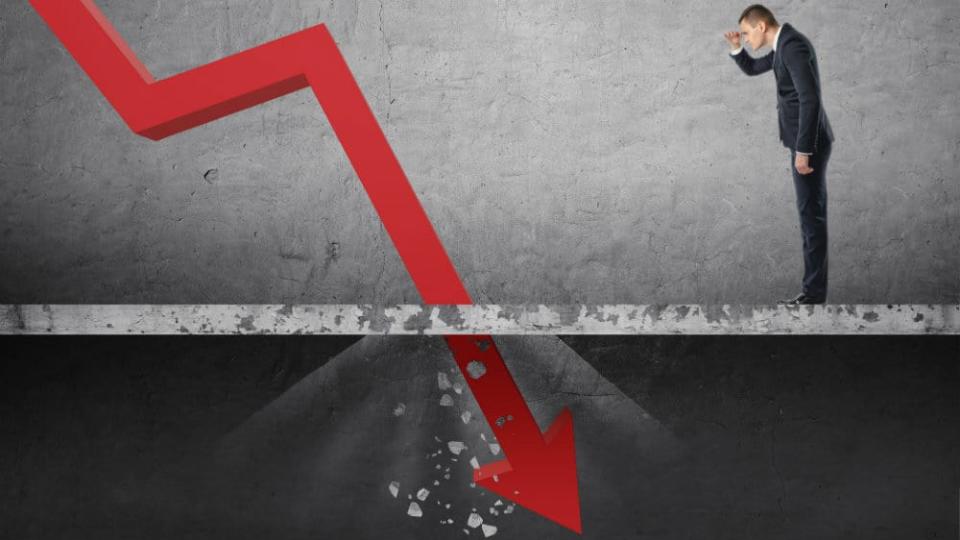3 Reasons Why Canada’s Oil Sector Is in Big Trouble

Oil prices have been depressed for five years now. After spending stretches of the previous decade above US$100 per barrel, oil has averaged just US$50 per barrel since 2014. When the decline first began, many analysts expected a quick rebound. That never happened.
Today, it’s clear that we’re in a “lower for longer” pricing environment. Oil companies have all but abandoned their deepwater projects with high production costs, turning their focus on ultra low-cost shale plays in the U.S. Companies like Exxon Mobil Corporation, Chevron Corporation, and Royal Dutch Shell plc are targeting production costs as low as US$15 per barrel, levels unheard of outside the Middle East.
The new oil environment looks here to stay given that the underlying factors – unconventional drilling techniques and oversupply – aren’t going away anytime soon. If you’re invested in Canada’s oil sector, alarm bells should be ringing in your head.
Uncompetitive pricing
Canada has a ton of oil sands output. Alberta’s oil sands are the third-largest oil reserves in the world. Only Venezuela and Saudi Arabia have bigger reserves. Having huge resource potential is a plus, but due to structural issues with oil sands, the outlook is not as rosy as it appears.
Oil sands output is largely considered to be lower quality. Due to differing extraction techniques and characteristics, oil sands output typically needs to be refined more than conventional output. More refining means higher costs. Due to this, oil sands output almost always sells at a steep discount.
Today, many oil sands companies like Canadian Natural Resources Ltd (TSX:CNQ)(NYSE:CNQ) and Imperial Oil Ltd. (TSX:IMO)(NYSEMKT:IMO) are dangerously close to breakeven levels. Meanwhile, U.S. shale companies can breakeven at prices as low as US$20 per barrel. If oil prices remain depressed, Canada’s oil sands industry could face major difficulties remaining economically viable.
Lack of infrastructure
Once you drill for oil, you need to find a way to get it to market. But before consumers can get involved, that oil needs to be refined into usable byproducts. So, oil companies need to find a way to get their daily production to refineries, which could be hundreds of miles away.
The most popular method is via pipeline, as shipping crude by rail and truck is less efficient, more costly, and comes with increased risk. Unfortunately, Canada has a pipeline shortage. Last year, regional oil prices fell by more than 50% as oil producers bid to the death to secure dwindling pipeline capacity.
Because pipelines can take a decade to plan, permit, and build, this problem isn’t going away anytime soon. If Canada’s oil production can’t be brought to market, it’s worth very little. We experienced that firsthand during the supply glut of 2018 which nearly bankrupted several firms.
Majors are selling
According to investing guru Jeremy Grantham, oil sands stand a good chance at becoming “stranded assets.” That means they’ll ultimately have a value of $0. Judging by the actions of oil supermajors, it seems like they agree.
This year, companies like Total SA, BP plc, ConocoPhillips, Exxon Mobil Corporation, Chevron Corporation, and Royal Dutch Shell plc have already sold roughly $30 billion in high-cost assets. The move to de-risk their portfolios has just begun, and we could see intensified selling pressure in 2020.
When it comes to the cost curve, oil sands are near the top of the list. Due to structurally higher costs, infrastructure limitations, and forced selling by the world’s largest oil companies, Canada’s oil sector should face extreme difficulties in the decade to come.
More reading
Generate $1,000 in Monthly Passive Income With Just $100,000 Capital
Canada Revenue Agency: 1 TFSA Mistake That Could Get You in Deep Trouble
Fool contributor Ryan Vanzo has no position in any stocks mentioned.
The Motley Fool’s purpose is to help the world invest, better. Click here now for your free subscription to Take Stock, The Motley Fool Canada’s free investing newsletter. Packed with stock ideas and investing advice, it is essential reading for anyone looking to build and grow their wealth in the years ahead. Motley Fool Canada 2019

 Yahoo Finance
Yahoo Finance 